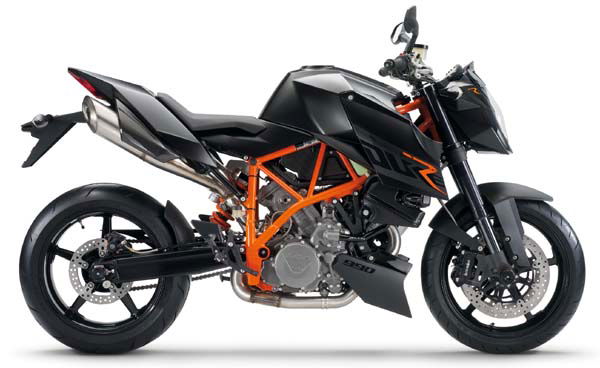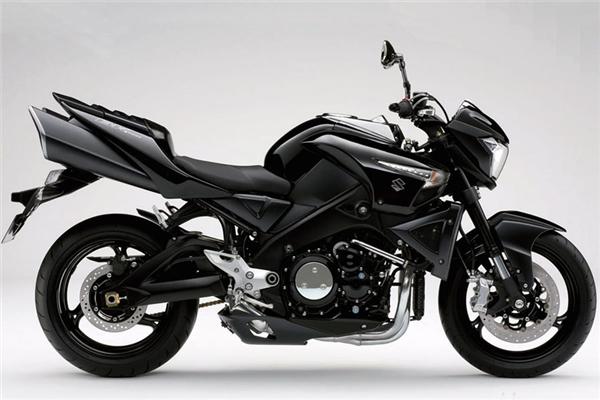GSF 650S Bandit review
Old faithful returns with a new jacket, starched braces and a spanking new motor. Still, the same old trusty, reliable bulletproof Bandit

I remember the first time I saw my dad wearing jeans. He just looked wrong. Dad's from a generation of slack-wearers, not denim, and him in Levi's finest looked as out of place as a Casio watch in a Ben-Hur film.
But progress and the passing of time catch up with us all, and in 2007 it's the turn of Suzuki's Bandit 650.
Now in its twelfth year Suzuki's classic budget bike has finally had to bow to a demanding new generation. Thanks to tough new EU laws limiting engine noise and emissions, the classic air/oil cooled motor has been consigned to the crusher in the sky, and one of the last bastions of carbs has fallen to fuel injection.
And unlike my dad, who converted his jeans to garage rags, progress with the Bandit's here to stay.
As you can see from the pictures Suzuki has avoided messing with the Bandit's look, as it generally has for the last 12 years! Aesthetically the 2007 bike's hard to split from its predecessor. The fairing, forks, swingarm and frame all look the same at a glance, but there are subtle differences.
The frame is 10 per cent more rigid thanks to 4mm larger diameter tubes, which has necessitated slight bodywork tweaks to fit around this, and the swingarm is actually longer than before because the new liquid-cooled motor is more compact.
Which is, of course, the major change. Although the bore and stroke are unchanged that's the only similarity between the two motors. Where the old Bandit engine could trace its roots back to a small weaving loom built sometime during the industrial revolution, the '07 motor is a ground-up redesign.
Which is where Suzuki could have come unstuck. In its 12-year reign the Bandit has gained a huge following by providing cheap, reliable and hassle-free motoring with a friendly and smooth motor. No frills, but very, very competent. Changing the motor, the very heart of the bike, could easily have buggered that character. But like the new Bandit 1250, which also went water-cooled this year, the 650 gets away with it.
As you would expect the new 650 feels identical to last year's Bandit to sit on. Although it does come with an adjustable seat (which, incidentally, Suzuki recommends you get a dealer to adjust for you... What next? Ask them to put the petrol in too?), the rest of the riding position is unchanged from the comfortable stance of the old model.
As well as stiffening the chassis Suzuki has adjusted the spring rates and oil in both the forks and shock to improve the bike's ride. Although the Bandit will never be as sporty as a Hornet or GSR600 it's now certainly a step up from last year.
For most Bandit owners, often less experienced riders, handling is reassured and secure, while more confident riders probably wish it was a little more settled in corners. Either way it's more than good enough for swift road riding.
As it did with the Bandit 1250 Suzuki has hit the nail on the head with the new water-cooled engine. The fuel injection is slightly snatchier than the carbs of the old model, something to be expected really, but the smoothness of the engine still impresses. Although claimed power is virtually identical between the old and new motor, the water-cooled lump pulls harder thanks to lighter internals. Big things flying up and down take more effort to get moving than smaller things, y'see.
Personally I felt a bit of the old bike's feel was lost in the new engine. It doesn't have the same noise or slight tingle, but there's no denying it's a very good engine. Like the 1250 the power delivery's very smooth, almost turbine like, and it feels stronger than before to ride. It doesn't have any noticeable power bands or jumps in the delivery, which makes it very easy to live with and reduces the gear changes needed, making it perfect for new riders. Hassle-free motorcycling at its best, and cheap as well.
In order to keep the running costs of Bandit ownership down Suzuki has increased the interval between major services (where the valve clearances are checked) from 7500 miles to 15,000 miles, as well as improving the quality of the exhaust down-pipes, a traditionally weak spot on the old bike.
The Bandit is never going to set pulses racing like the new Hornet or Z750, and being a differnt style of bike, it isn't meant to. With a price tag of £4449 for the naked and £4749 for the half-faired bike it offers really good value for money and easy motoring rather than the cool-factor of Zs or Hornets. For its target market the Bandit's certain to sell as it ticks every box and already has a really strong reputation to build on. The water-cooled engine does improve on the old air-cooled motor and although die-hard Bandit owners will probably feel it lacks the old engine's character new owners will love its easy-going nature.
VERDICT 4/5
New engine, same old trusty, reliable bulletproof Bandit
WORDS: JON URRY
PICS: GARY FREEMAN
I remember the first time I saw my dad wearing jeans. He just looked wrong. Dad's from a generation of slack-wearers, not denim, and him in Levi's finest looked as out of place as a Casio watch in a Ben-Hur film.
But progress and the passing of time catch up with us all, and in 2007 it's the turn of Suzuki's Bandit 650.
Now in its twelfth year Suzuki's classic budget bike has finally had to bow to a demanding new generation. Thanks to tough new EU laws limiting engine noise and emissions, the classic air/oil cooled motor has been consigned to the crusher in the sky, and one of the last bastions of carbs has fallen to fuel injection.
And unlike my dad, who converted his jeans to garage rags, progress with the Bandit's here to stay.
As you can see from the pictures Suzuki has avoided messing with the Bandit's look, as it generally has for the last 12 years! Aesthetically the 2007 bike's hard to split from its predecessor. The fairing, forks, swingarm and frame all look the same at a glance, but there are subtle differences.
The frame is 10 per cent more rigid thanks to 4mm larger diameter tubes, which has necessitated slight bodywork tweaks to fit around this, and the swingarm is actually longer than before because the new liquid-cooled motor is more compact.
Which is, of course, the major change. Although the bore and stroke are unchanged that's the only similarity between the two motors. Where the old Bandit engine could trace its roots back to a small weaving loom built sometime during the industrial revolution, the '07 motor is a ground-up redesign.
Which is where Suzuki could have come unstuck. In its 12-year reign the Bandit has gained a huge following by providing cheap, reliable and hassle-free motoring with a friendly and smooth motor. No frills, but very, very competent. Changing the motor, the very heart of the bike, could easily have buggered that character. But like the new Bandit 1250, which also went water-cooled this year, the 650 gets away with it.
As you would expect the new 650 feels identical to last year's Bandit to sit on. Although it does come with an adjustable seat (which, incidentally, Suzuki recommends you get a dealer to adjust for you... What next? Ask them to put the petrol in too?), the rest of the riding position is unchanged from the comfortable stance of the old model.
As well as stiffening the chassis Suzuki has adjusted the spring rates and oil in both the forks and shock to improve the bike's ride. Although the Bandit will never be as sporty as a Hornet or GSR600 it's now certainly a step up from last year.
For most Bandit owners, often less experienced riders, handling is reassured and secure, while more confident riders probably wish it was a little more settled in corners. Either way it's more than good enough for swift road riding.
As it did with the Bandit 1250 Suzuki has hit the nail on the head with the new water-cooled engine. The fuel injection is slightly snatchier than the carbs of the old model, something to be expected really, but the smoothness of the engine still impresses. Although claimed power is virtually identical between the old and new motor, the water-cooled lump pulls harder thanks to lighter internals. Big things flying up and down take more effort to get moving than smaller things, y'see.
Personally I felt a bit of the old bike's feel was lost in the new engine. It doesn't have the same noise or slight tingle, but there's no denying it's a very good engine. Like the 1250 the power delivery's very smooth, almost turbine like, and it feels stronger than before to ride. It doesn't have any noticeable power bands or jumps in the delivery, which makes it very easy to live with and reduces the gear changes needed, making it perfect for new riders. Hassle-free motorcycling at its best, and cheap as well.
In order to keep the running costs of Bandit ownership down Suzuki has increased the interval between major services (where the valve clearances are checked) from 7500 miles to 15,000 miles, as well as improving the quality of the exhaust down-pipes, a traditionally weak spot on the old bike.
The Bandit is never going to set pulses racing like the new Hornet or Z750, and being a differnt style of bike, it isn't meant to. With a price tag of £4449 for the naked and £4749 for the half-faired bike it offers really good value for money and easy motoring rather than the cool-factor of Zs or Hornets. For its target market the Bandit's certain to sell as it ticks every box and already has a really strong reputation to build on. The water-cooled engine does improve on the old air-cooled motor and although die-hard Bandit owners will probably feel it lacks the old engine's character new owners will love its easy-going nature.
VERDICT 4/5
New engine, same old trusty, reliable bulletproof Bandit
WORDS: JON URRY
PICS: GARY FREEMAN

